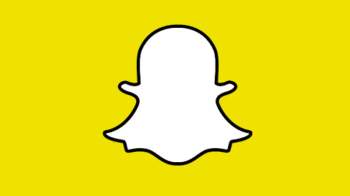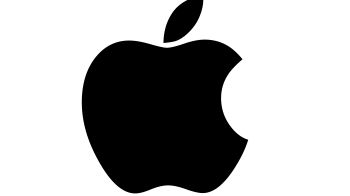How can brands successfully tap into in-app advertising?
IAB UK
Apps have become an essential part of our daily lives, but are marketers making the most of this opportunity? We turn to our Mobile In-App Steering Group to find out
From doing our weekly shop to catching up on the daily news, apps have become an engrained and essential part of our daily lives. So it’s no surprise that our appetite for apps saw us download a total of 204 billion of them in 2019 and that latest data shows that usage is surging in lockdown.
But are marketers fully embracing the opportunities that can be found in mobile and in-app advertising? And what is the outlook for the channel going forward? We spoke to the IAB’s Mobile In-App Steering Group to get their thoughts.
Why is it important to always consider in-app when planning activity?
“Adults today spend, on average, around 3 hours and 15 minutes a day on their mobile phones. Mobiles play such a crucial role in our lives - they are handy for looking up recipes, allowing us to connect with our loved ones, catching up on important news and keeping us entertained. All of these activities are available via apps, with 90% of all mobile time last year spent in-app. Moreover, research from App Annie reveals that consumer spending in both iOS and Android apps in Q1 2020 increased 15% and 5% respectively, meaning huge opportunities for in-app marketers planning their campaigns in the current climate.”
Ken Suh, chief strategy officer, Unruly
“In-app advertising has become the fastest growing form of mobile advertising in the market. This is because today’s consumers spend the majority of their time in-app - apps account for over 90% of internet time on smartphones. For any advertiser looking to engage consumers on mobile, in-app is key. Additionally, in-app offers advertisers more high impact formats that provide 100% share of voice, over mobile web. These formats generate greater viewability and brand awareness. Where consumers often get side-tracked scrolling through mobile browsers, in-app is an exclusive environment that enables high user engagement through video, and impressions that are delivered at reasonable stopping points in the user experience.”
Raphael Rodier, international chief revenue officer, Ogury
“There is a clear move from both brands and customers to put apps at the centre of their digital experiences. For brands, apps offer an environment where they can tailor both the experience and utility they offer to customers. For consumers, apps now dominate our digital lives, whether that is by ordering groceries, a taxi or streaming our latest entertainment. That means that if you’re not considering in-app as both a platform and environment for your advertising, you’re in danger of falling behind your competition.”
Andy Chandler, general manager UK & Ireland, Adjust
“Mobile phones have become increasingly central to how people communicate, consume, and entertain themselves. In 2020, in-app is one of the most effective and exciting ways for brands to reach diverse and engaged audiences they may not have been able to before, in new and exciting ways. On TikTok, the brands that have the most success are those that lean into the style, community and authenticity of the platform - whether it be working with individual creators on original content or owning new hashtag challenges. Brands have a unique opportunity to form new emotional connections and consumer advocacy in-app.
Anastasia Nicholl, Vertical Lead, Global Business Solutions, TikTok
Is there a lack of understanding of the benefits of in-app marketing in the industry? And, if so, why?
“I still hear a lot of misconceptions around in-app marketing, especially around delivering experiences that are easy or intuitive for audiences. In the past, app advertising would focus solely on driving installs, but now with the use of matching creatives with deep links, savvy advertisers are driving customers to specific places inside their app - creating an effortless route to purchase. Innovation within the digital advertising industry has always been very fast, so when you’re not immersed in a subject all the time, it can be difficult to keep up with market innovation. The app ecosystem especially has proven how new companies who understand the advantages of mobile can disrupt existing verticals - from games, to finance, to retail.”
Andy Chandler, general manager UK & Ireland, Adjust
“For a long time, the ad tech industry relied on cookie-based advertising to understand users. But with Google’s decision to stop third-party cookies, the industry must find other, more reliable ways to uncover behaviours. This is where in-app comes in. There is a lack of understanding of how to piece together data, from apps used to websites browsed, to reach audiences in-app. Yet with access to reliable consented user data, it’s possible to understand user’s mobile journeys to achieve this. There’s also a common misconception that in-app viewability can’t be measured. But with the IAB’s Open Measurement SDK, advertisers can now benefit from app inventory being measurable for viewability by third-party vendors too.” Raphael Rodier, international chief revenue officer, Ogury
“The number of marketing opportunities available to brands via platforms like TikTok is evolving exponentially and at a rapid pace - we’re continually innovating our proposition to provide the best and most effective ad formats for brand partners. We are seeing more brands recognise the unique value this can bring – particularly less traditional players or those whose marketing goals are to reach younger generations. It takes boldness and creativity to fully embrace in-app advertising – but we have dedicated teams to support brands successfully onto our platform.”
Anastasia Nicholl, Vertical Lead, Global Business Solutions, TikTok
“In the earlier days of mobile usage, our mobiles were seen more as an extension of our desktop computers. Today, mobile should be treated as a separate entity, and marketers and advertisers should consider this when creating ads for both mediums. On mobile, screens are smaller, and we’re looking to consume content more quickly, so advertising needs to reflect this fast-paced format. Advertisers also have the unique advantage of location-based targeting on mobile, so ads can be tailored in a more meaningful way based on a specific area. By harnessing mobile’s unique advantages, marketers, as well as developers, can create unique in-app services and campaigns to engage mobile users more effectively.”
Ken Suh, chief strategy officer, Unruly
How has the global coronavirus crisis impacted the role of in-app marketing as we move into a home-based economy? And what do you think the long-term impact of this will be?
“With most of us now spending most of our time at home, we’ve been heartened to see so many people turn to TikTok to stay entertained and informed at this uncertain and challenging time. Inevitably, this huge change in our daily lives will have an impact on how and why brands engage with potential consumers. This is of course something that is affecting everyone and everything, so adaptation is happening everywhere. The long-lasting effects of the global pandemic are still a huge unknown, so for now it’s important to focus on having a nimble and agile approach.”
Anastasia Nicholl, Vertical Lead, Global Business Solutions, TikTok
“According to recent Unruly research, 47% of UK consumers are spending more time on their phones since the COVID-19 outbreak, as consumers remain at home and work remotely. As our mobile usage increases, so does the time we spend communicating with brands in mobile apps, opening up huge opportunities for marketers to create targeted ads to better connect with consumers. Remote working is already proving effective and, if introduced more permanently, this will automatically impact in-app, which will continue to play a vital role in servicing our needs, anytime and anywhere on demand.“
Ken Suh, chief strategy officer, Unruly
“With the majority of people now at home, it’s clear people are spending much more time on their phones and inside apps. Adjust’s data shows that installs and sessions across some verticals are rising steadily, particularly when it comes to business, food & drink and gaming apps - showing that consumers are keen to engage with new apps they might not have considered before. New users’ behaviour is also very much in-line with the existing audience, suggesting that these trends will be stickier even after the current circumstances we find ourselves in have changed. The current situation has also highlighted the utility that apps offer both brands and consumers - so it’s likely we’ll see an acceleration to a more app-focused world. As the circumstances continue to evolve, we hope the flexibility of the app ecosystem can continue to help make a difference in peoples’ lives.”
Andy Chandler, General Manager UK & Ireland, Adjust
“Mobile use and the consumption of apps has risen drastically. Remote working apps, including Microsoft Teams, have seen exponential growth, alongside virtual socialising apps (Houseparty and Zoom) that went from 5% UK ownership to 10% (01 Apr - 20 Apr). Coupled with over $23.4 billion being spent by consumers worldwide in app stores (Q1 2020), in-app has become crucial to understanding consumer behaviour in lockdown. But, with economic uncertainty comes a decrease in spending, meaning brand awareness now is more important than ever. Where cookie-based advertising can help to drive short-term sales, in-app focuses on branding and awareness for long-term gain, enabling advertisers to be front of mind when consumer spending returns.”
Raphael Rodier, international chief revenue officer, Ogury
This piece was first published on The Drum.
Related content
Understanding IDFA changes: 5 things to know
Learn moreChange4Life campaign launches sugar app
Learn moreSnapchat adds new emoji feature
Learn moreApple to give App Store a makeover
Learn more
Rediscover the joy of digital advertising
Champion connections instead of clicks. Capture audiences' imaginations, not just their attention. Boldly find your own beat instead of letting tech set the pace. It’s time to rediscover the joy of digital.



